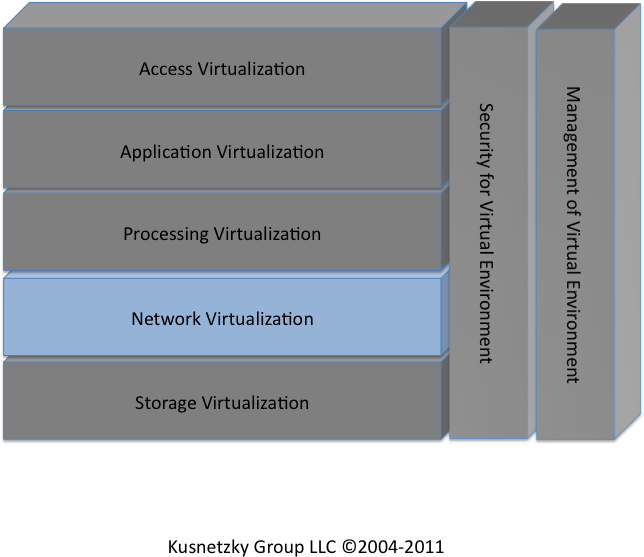Chapter 5. Network Virtualization: Controlling the View of the Network
What Is Network Virtualization?
Our journey into the layers of virtualization continues. This time, we’re going to examine the concept of network virtualization (see Figure 5-1). Network virtualization refers to tools used to present an artificial view of the network environment.

Network virtualization often is supported by network routers, network servers, and the like. Systems executing the organization’s applications and workloads may not know this is happening. Client systems and server systems just see the network as presented by those network resources.
This technology, as with other virtualization technologies, was originally developed for mainframe systems in the late 1960s, was recreated on minicomputers (now called midrange machines) in the 1980s, and started appearing on industry-standard systems (X86-based) in the early 1990s. One difference is that network virtualization often was implemented on separate network servers rather than inside the operating systems supporting clients or servers.
This type of virtualization is often used in conjunction with several other types.
What Does Network Virtualization Do?
As shown in Figure 5-2, network virtualization creates an artificial view of the network that hides the physical network from clients and servers. It provides the following ...
Get Virtualization: A Manager's Guide now with the O’Reilly learning platform.
O’Reilly members experience books, live events, courses curated by job role, and more from O’Reilly and nearly 200 top publishers.

